Invicta Flies - Rabbit Bugger
Orignated by Troy Harrington of Kentucky, the Rabbit Bugger is one of those patterns that encourages creativity. Black, olive, and yellow are good colors, but many others will work as well. Like the Wooly Bugger, the pattern is versatile enough to tie in many different sizes and styles to fit most situations. In smaller sizes it has worked well for panfish and bass. In larger sizes it can immitate forage fish or large insects for trout or larger bass. Fish it various ways like a streamer or dead-drift like a nymph, depending on the food source you want to mimic. A brass bead or cone head at the eye lets it get a bit deeper, and no weight allows for shallower, slower retrieves. Whatever type of fly-fishing you prefer, there is a style of Rabbit Bugger to fit your needs, spring through winter, whatever the species.
 Hook: Mustad 3906B, #12-6 or similar
Thread: Uni-Thread 6/0
Tail: rabbit fur
Rib: fine oval tinsel
Body: rabbit dubbing
Collar: rabbit fur
Head (optional): cone or gold bead
|
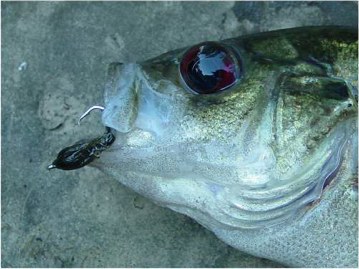 This Rock Bass fell for an olive Rabbit Bugger tied on a circle streamer hook.
|
Tying Instructions:
1) If using a cone head or brass bead, add this onto the hook first. Secure thread to hook. Build a small "dam" of the tying thread behind to hold in place. Bring thread to bend and tie in a clump of rabbit fur for the tail about hook shank in length.
2) Tie in rib material at tail tie-in point on underside of shank. Excess should extend beyond bend to be wound later.
3) Dub a tapered body of the same type of fur used for the tail or use Spirit River's Hareline dubbing. End the body about three hook-eye widths behind the eye.
4) Counter-wrap the tinsel ribbing forward over the body. Tie off, clip excess.
5) Make a large loop with the thread. Slide a 2" piece of a zonker strip into the loop and trap it there by maintaining tension on the loop of thread. Now very carefully, with sharp scissors, cut the fur near where it meets the skin strip, or further from it to create a shorter-fibered collar. Twist the thread loop to secure the fur. To cut down on some of the bulk, gently come out some of the underfur. Make two or two and a half turns with this "trapped" fur around the hook shank to form the fur collar. Be sure to stroke the hair toward the back as you wrap. Slightly wetting the fur will help control it.
6) Tie off and trim the excess. Build a thread head in front of the collar, whip finish and cement.
A few different Rabbit Buggers:
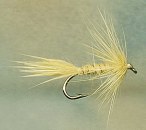 |
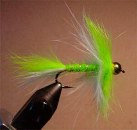 |
 |
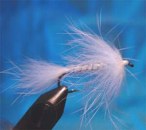 |
 |
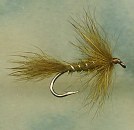 |
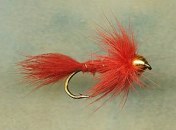 |
 |
 |